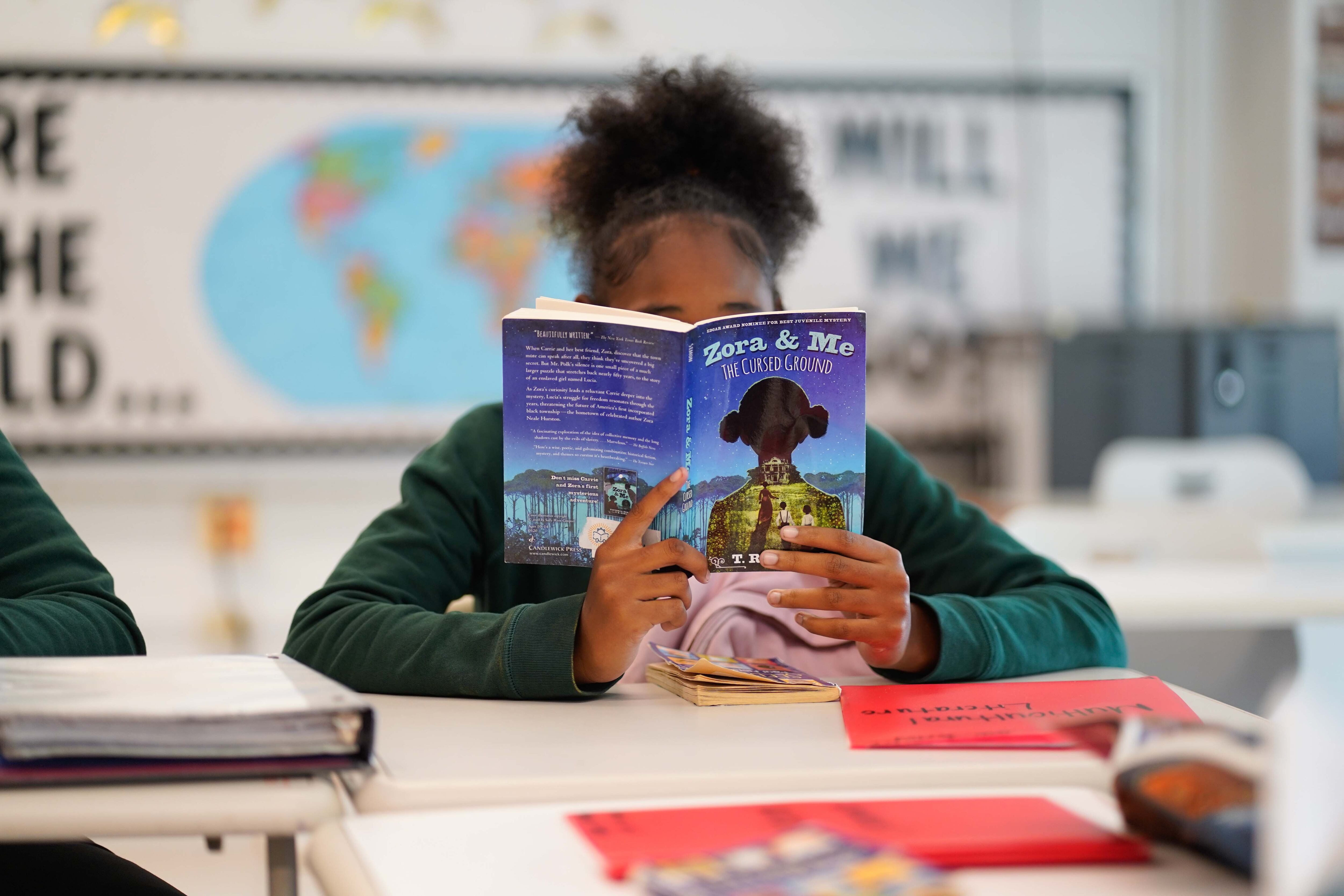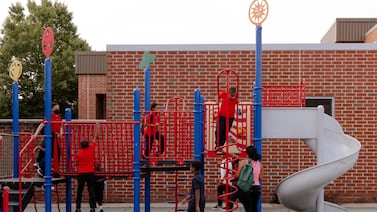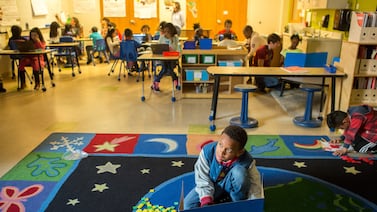Sign up for Chalkbeat Chicago’s free daily newsletter to keep up with the latest education news.
Two years after Illinois literacy advocates started pushing the state to adopt research-backed reading curriculum, the Illinois State Board of Education finalized a comprehensive literacy plan last month. Now, advocates are pushing for more funding to schools and support for educators to implement the plan.
The literacy plan grew out of an effort by Illinois advocates, who pushed lawmakers in 2022 to pass The Right to Read Act. The bill would have required schools to use evidence-based reading strategies, such as phonics, rather than the now-debunked “balanced literacy” approach, which is based on the idea that reading is a natural process. But that bill hit a wall during negotiations as advocates worked to address concerns about the needs of English language learners.
In the 2023 legislative session, advocates presented a new set of bills called the “Literacy and Justice for All Act.” After months of negotiations between advocates and lawmakers, Senate Bill 2243 passed. The law required the state board to create a literacy plan by the end of January 2024, a curriculum rubric for schools, and professional development opportunities for teachers.
Here is what is included in the state’s comprehensive literacy plan and what literacy advocates say is still needed:
What does the literacy plan mean for schools?
The almost 200-page plan is a hybrid between guidance and a workbook, designed to help pre-K-12 educators teach reading using evidence-based and developmentally appropriate practices. The plan’s three main goals are to provide research-backed literacy instruction, professional development and other support for current teachers in the classroom, and guidance to help school leaders create supportive learning environments.
“At its core, this plan is a resource that we hope will serve as a springboard to bring about local school, district, region, and statewide movement to elevate literacy instruction and ensure every learner, no matter where they reside, is provided with equitable opportunities to gain the literacy skills necessary for lifetime success,” said Erica Thieman, director of standards and instruction at the state board.
The plan is not a mandate for schools to follow and doesn’t require schools to buy new curriculum or instruction materials for educators. Since Illinois is a local control state, the plan only urges districts to use guidance in the plan.
Will this plan change how reading is taught to students with dyslexia?
Parents of children with dyslexia have struggled to get support from their child’s schools. Often waiting a long time — even years — before their child was able to get screened and receive an Individualized Education Program, or IEP.
The literacy plan stresses the need to identify students with dyslexia early, noting that universal screening can be used in schools “to identify students who are thriving, those at risk, or those in need of accelerated support. It also serves as a vital signal for potential systematic instructional improvements.”
The state board updated its dyslexia guide in early January. The guide provides more information about how to use screeners and assessments to identify and provide evidence-based interventions for students.
“I’m proud that we have it and I’m proud that we took steps, but I don’t think it’ll really make a difference until it gets implemented,” said Meredith Paige, co-founder of the CPS Family Dyslexia Collaborative. She is also still concerned about the lack of training for teachers to detect dyslexia.
Does the literacy plan include English language learners?
For Chicago and surrounding suburbs, supporting English learners will be a major area of focus since schools are enrolling a large number of migrant students.
Rebecca Vonderlack-Navarro and Erika Méndez of the Latino Policy Forum, who advocated for the needs of English learners during negotiations for the literacy bill, had been concerned that reading advocates looked at English learners as a monolith, instead of a group of students with complex needs. They are happy to see that the state board has included different types of English learners and highlighted support for students.
For instance, one section addresses dual language programming in schools. “These programs, which integrate instruction in both English and the students’ native languages, not only enhance language proficiency in both languages but also foster academic excellence,” the plan says.
“The report looks at the different emergent bilinguals, like newcomers,” said Mendez. “There are different versions of English learners that have different needs. The report sets up how each of those different student populations, even within English learners, are going to get supported in different ways.”
What is next for schools, teachers?
The Illinois State Board of Education has to create a rubric for school districts to evaluate literacy curriculum by July 1. Next year, the state board is required to create training opportunities for current educators that align with the comprehensive literacy plan by Jan. 1, 2025.
Beginning July 1, 2026, student teachers who plan to teach first through sixth grade will be tested on their knowledge of literacy on a content-area exam before they can receive a license and start teaching.
What do literacy advocates still want to see?
Advocates are pushing lawmakers to increase the state’s education budget and an increase of $550 million for the state’s evidence-based funding formula that supports public schools. Literacy advocates hope that the state board will set aside money to implement the literacy plan.
The state board has recommended $3 million for fiscal year 2025 to implement the literacy plan, but advocates hope for $45 million.
Jessica Handy, executive director of Stand for Children Illinois, said she will be working on a new bill to strengthen the literacy plan.
“There is a lot more work to be done on literacy instruction in Illinois,” Mea Anderson, a spokesperson for Stand for Children Illinois said. “The plan is a great starting point, and we find it promising that ISBE leadership seems highly motivated to continue that work.”
Samantha Smylie is the state education reporter for Chalkbeat Chicago, covering school districts across the state, legislation, special education, and the state board of education. Contact Samantha at ssmylie@chalkbeat.org.








